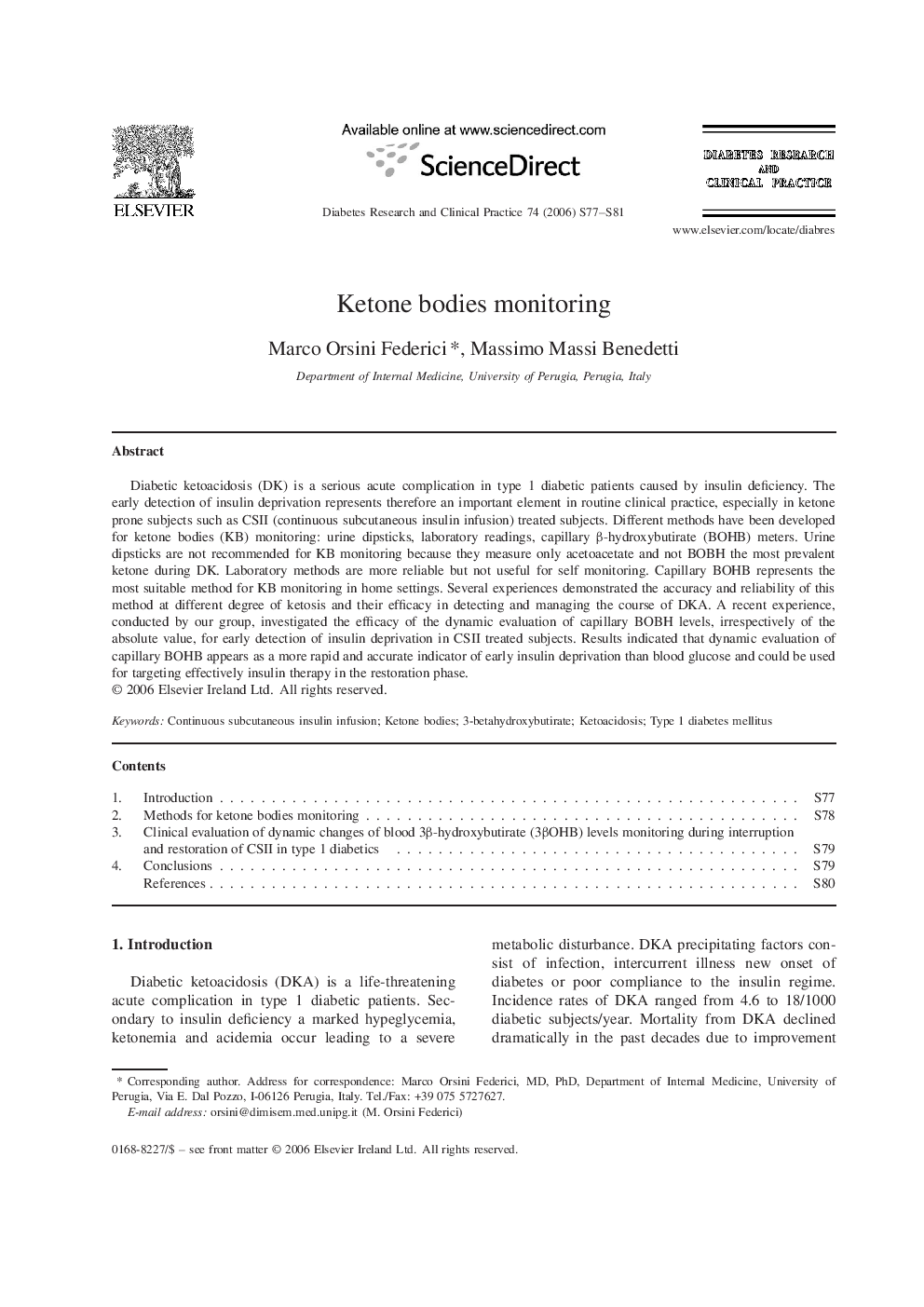| کد مقاله | کد نشریه | سال انتشار | مقاله انگلیسی | نسخه تمام متن |
|---|---|---|---|---|
| 2799037 | 1155712 | 2006 | 5 صفحه PDF | دانلود رایگان |

Diabetic ketoacidosis (DK) is a serious acute complication in type 1 diabetic patients caused by insulin deficiency. The early detection of insulin deprivation represents therefore an important element in routine clinical practice, especially in ketone prone subjects such as CSII (continuous subcutaneous insulin infusion) treated subjects. Different methods have been developed for ketone bodies (KB) monitoring: urine dipsticks, laboratory readings, capillary β-hydroxybutirate (BOHB) meters. Urine dipsticks are not recommended for KB monitoring because they measure only acetoacetate and not BOBH the most prevalent ketone during DK. Laboratory methods are more reliable but not useful for self monitoring. Capillary BOHB represents the most suitable method for KB monitoring in home settings. Several experiences demonstrated the accuracy and reliability of this method at different degree of ketosis and their efficacy in detecting and managing the course of DKA. A recent experience, conducted by our group, investigated the efficacy of the dynamic evaluation of capillary BOBH levels, irrespectively of the absolute value, for early detection of insulin deprivation in CSII treated subjects. Results indicated that dynamic evaluation of capillary BOHB appears as a more rapid and accurate indicator of early insulin deprivation than blood glucose and could be used for targeting effectively insulin therapy in the restoration phase.
Journal: Diabetes Research and Clinical Practice - Volume 74, Supplement 2, December 2006, Pages S77-S81